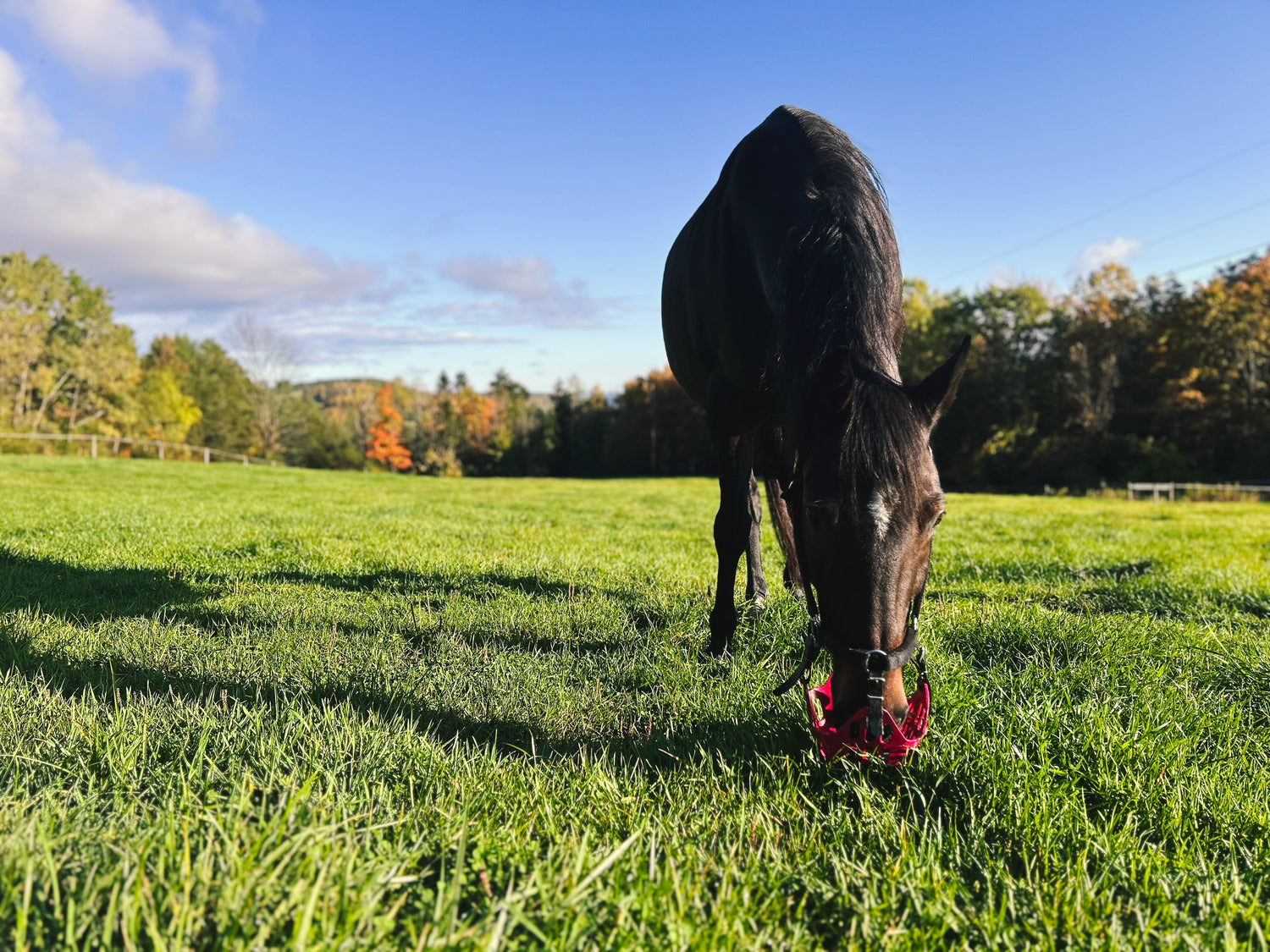Having problems or issues with rubs caused by your grazing muzzle, halter, or both? You've come to the right place! Just below, you'll find our most comprehensive video yet.
Tried everything and still have issues? Don't despair! Schedule a complimentary video fit consult with an expert fitter!
Most common reasons for rubbing
Chin Rubbing
1. The muzzle is too small for your horse. These muzzles should fit MUCH larger than a traditional muzzle. Size is based on bit size not head size. Check out our muzzle sizing page for how to choose the right size. And make sure to read our fitting page with the most current updated instructions.
Although most cases of rubbing can be fixed with adjustments to the fit, there is a small percentage of horses with nose shapes that may put the chin in more frequent contact with the back of the muzzle even when the muzzle is fitted correctly. In these cases, we have a sticker accessory that can help. You can also simply place a piece of duct tape over the holes on the inside back surface of the muzzle where your horse’s chin makes contact.
Is your horse a draft or draft cross with a bit size of 6 inches or larger? We have developed a do-it-yourself method for expanding our horse-size muzzle to accommodate horses with larger heads. Note: this method will void the warranty, so reach out with any questions!
2. The muzzle is turned the wrong way. For correct fit, the "greenguard" logo should face the front. This orientation puts the wider side of the muzzle front to back so that there is enough room for the chin. Note that the logo is the same color as the muzzle and can be hard to see.
3. There is not enough space between the muzzle and the horse's mouth. There should be a 1" space in the bottom of the muzzle (about the width of your hand). Horses need this space in order to access all the slots in the bottom, much like a slow feeder. This space also gives them a wider opening for their chin since the muzzle tapers wider towards the top.
4. The muzzle attachment straps are not laying flat and are causing the muzzle to “ride up” so there is no longer enough space in the bottom. The best solution to this problem is to wrap a piece of tape tightly around each of the straps to keep them secure and flat. Here is a video tutorial.
5. The side straps attached to the halter are pulling the muzzle forward and leaving less room for the chin. Place the side straps further back on the halter - behind the halter eyelets if needed.
6. The straps are too short and tightly connected to the halter. Straps that are too tight can cause the muzzle and/or halter to rub, and may even warp or crack the muzzle due to the increased pressure from the halter. Make sure to adjust the straps long enough so that they are flexible and allow the muzzle to move independently of the halter.
Jaw Rubbing
If you are seeing rubs under your horse's jaw, here is a video on making adjustments to prevent jaw rubbing.
If you are still have issues, email us at support@gg-equine.com and send photos of the rub and your horse in their halter and muzzle with their head upright from the side profile so we can take a look at the fit. We can usually solve most issues with a few adjustments!





